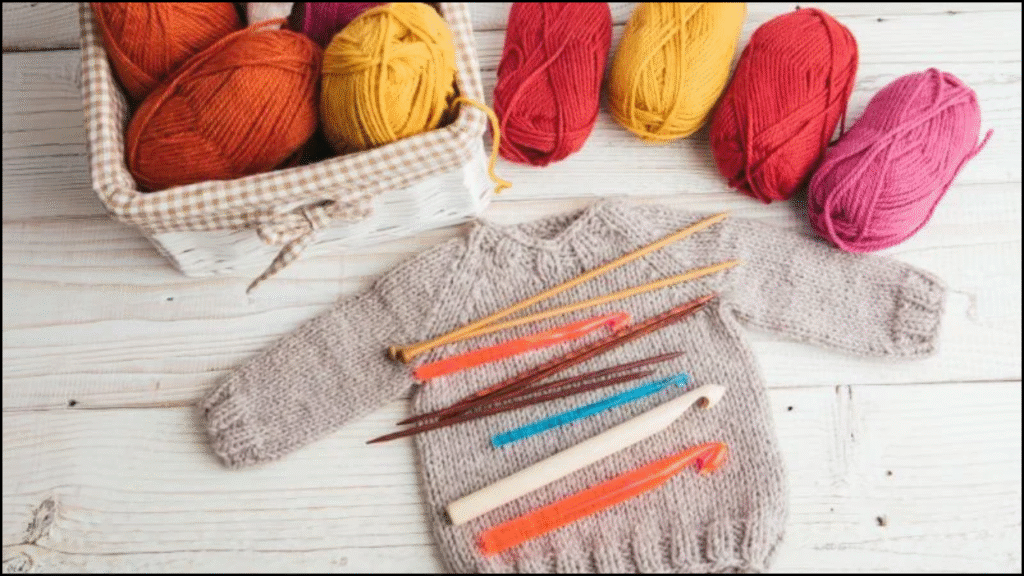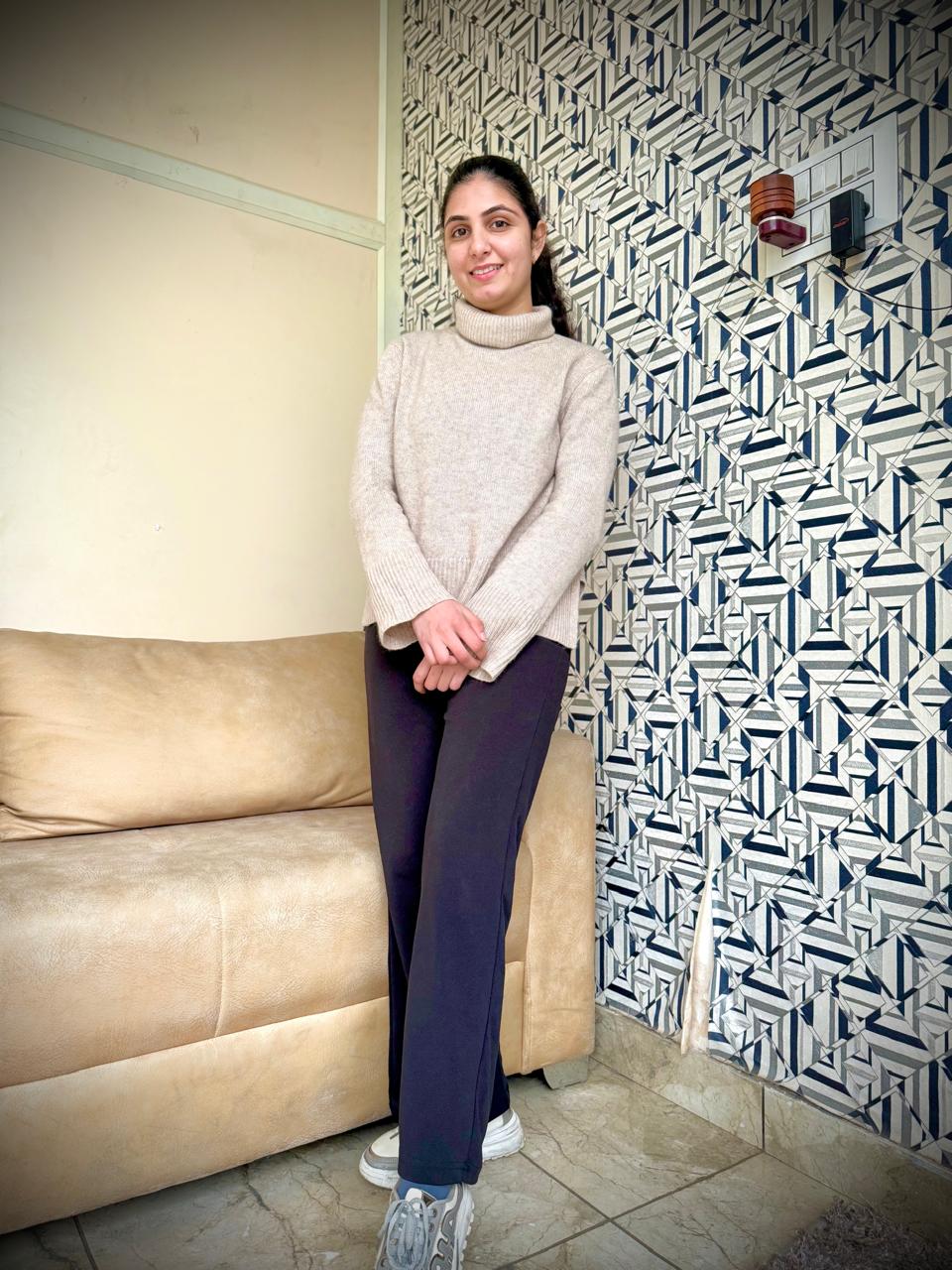
Crochet traditionally uses cotton or wool yarn, but creative makers have moved beyond these boundaries. Innovation in materials has allowed crochet to become not only a craft but also an experimental art form. Wire, plastic, fabric strips, and other unusual media open new design possibilities while challenging common assumptions about texture, flexibility, and function. Exploration of unconventional crochet materials reveals how practicality and creativity merge in surprising ways.
Table of Contents
Why Use Unconventional Materials in Crochet
- Creative Freedom: Artists and crafters can express individuality through textures and finishes not possible with yarn.
- Durability: Materials such as wire and plastic offer strength and longevity compared to traditional fibers.
- Sustainability: Upcycled materials reduce waste and promote eco-conscious crafting.
- Functional Variety: Non-traditional fibers allow projects to shift from wearables to sculpture, home décor, or jewelry.
- Artistic Value: Unique aesthetics give crocheted objects sculptural and ornamental qualities.
Common Unconventional Crochet Materials
Wire Crochet
- Wire adds structure and a metallic sheen.
- It is commonly used in jewelry making, such as necklaces, bracelets, and earrings.
- Thin gauges like 28–30 gauge provide flexibility, while thicker wire gives stability.
- Tools must be handled carefully because the wire can break or scratch hooks.
Plastic Crochet
- Plastic bags can be cut into strips to make “plarn” (plastic yarn).
- This technique turns waste into useful items like tote bags, mats, and baskets.
- Plastic adds waterproof qualities, making products suitable for outdoor use.
- The stiffness requires stronger hand control compared to soft yarn.
Fabric Strips
- Old t-shirts, bed sheets, or denim can be transformed into crochet material.
- Fabric strips create chunky textures, ideal for rugs, baskets, and storage containers.
- Stretchy cotton knits work better than stiff woven fabrics.
- This practice emphasizes recycling and sustainable crafting.
Paper Crochet
- Paper yarn or twisted strips of paper offer lightweight yet delicate crochet work.
- Used in creating wall art, lightweight hats, and sculptural pieces.
- Waterproofing treatment is often required for durability.
Raffia and Natural Fibers
- Raffia gives a rustic and organic finish.
- Commonly used in hats, handbags, and baskets.
- Natural plant fibers like hemp or jute add strength but can be rough on hands.
Unconventional Threads
- Fishing line, embroidery floss, or metallic threads give distinct textures.
- These materials are chosen for sparkle, translucency, or fine detail.
- Jewelry designers often prefer these for their delicate finishes.
Comparison of Materials
| Material | Texture | Best Uses | Durability | Sustainability Factor |
|---|---|---|---|---|
| Wire | Stiff, metallic | Jewelry, sculptures | Very durable | Low (depends on sourcing) |
| Plastic (Plarn) | Flexible, slightly stiff | Bags, mats, outdoor items | High, waterproof | High (recycling potential) |
| Fabric Strips | Soft or bulky | Rugs, baskets, storage | Moderate to high | High (upcycling textiles) |
| Paper | Light, delicate | Wall art, hats, experimental | Low unless treated | Moderate (depends on coating) |
| Raffia/Natural Fibers | Rustic, earthy | Hats, baskets, accessories | High but rough texture | Moderate to high |
| Unconventional Threads | Smooth, fine, shiny | Jewelry, detailing, lace work | Moderate | Low to moderate |
Challenges of Using Unconventional Crochet Materials
- Tool Damage: Wire and plastic can wear down hooks.
- Hand Strain: Stiff materials require a stronger grip and slower progress.
- Limited Flexibility: Unlike yarn, some materials cannot be easily shaped.
- Durability Issues: Paper and certain plastics may degrade over time.
- Learning Curve: Beginners may struggle with handling new textures.
Creative Project Ideas
Wire Crochet Projects
- Statement necklaces with beads and wire.
- Wire-sculpted flowers for home décor.
- Delicate earrings with fine loops.
Plastic Crochet Projects
- Grocery totes from recycled bags.
- Outdoor mats resistant to rain.
- Storage baskets with waterproof lining.
Fabric Strip Crochet Projects
- Bold, colorful rag rugs.
- Laundry baskets with strong handles.
- Thick coasters and placemats.
Paper Crochet Projects
- Wall-mounted art panels.
- Lightweight jewelry coated for strength.
- Decorative hats with stiff brims.
Raffia Crochet Projects
- Sun hats with natural texture.
- Stylish summer handbags.
- Rustic storage containers.
Mixed Media Projects
- Combining wire and beads for jewelry.
- Mixing raffia with yarn for texture contrast.
- Using fabric strips with plastic for strong home accessories.
Sustainability Benefits of Unconventional Materials
| Material | Waste Reduction Method | Environmental Impact |
|---|---|---|
| Plastic (Plarn) | Recycles single-use bags | Prevents landfill buildup |
| Fabric Strips | Upcycles old clothing and textiles | Extends fabric lifecycle |
| Paper | Reuses newspapers or paper scraps | Reduces paper waste |
| Raffia/Natural Fibers | Uses renewable plant-based sources | Minimal ecological footprint |
- Sustainable crafting reduces dependence on new synthetic yarn.
- Upcycling gives new purpose to items otherwise discarded.
- Eco-conscious crochet promotes mindful consumerism.
Tips for Crocheting with Unconventional Materials
- Use ergonomic hooks to reduce strain with stiff materials.
- Select larger hooks for bulky or stiff fibers like fabric strips and plarn.
- Keep scissors nearby to cut tough materials like wire or plastic.
- Treat paper or raffia projects with sealants to improve durability.
- Experiment with stitch tension to find the right balance between flexibility and structure.
- Combine traditional yarn with unconventional materials for hybrid textures.
Future of Crochet with Unconventional Materials
- Artists and designers are increasingly showcasing unconventional crochet in galleries and fashion shows.
- Recycled material usage aligns with global sustainability goals.
- Technological innovations may introduce new fibers like biodegradable plastics or recycled composites.
- Community workshops encourage people to transform waste into art, blending creativity with environmental responsibility.
The Way Forward
Crochet evolves continuously as artists expand beyond traditional yarn. Wire, plastic, fabric strips, paper, and other materials reshape how crochet is perceived, moving it from craft to sustainable art and innovative design. Practical applications meet aesthetic experimentation, giving unconventional crochet a lasting place in modern creativity. Unusual materials encourage both resourcefulness and originality, ensuring that crochet remains a dynamic and adaptable art form for generations to come.

